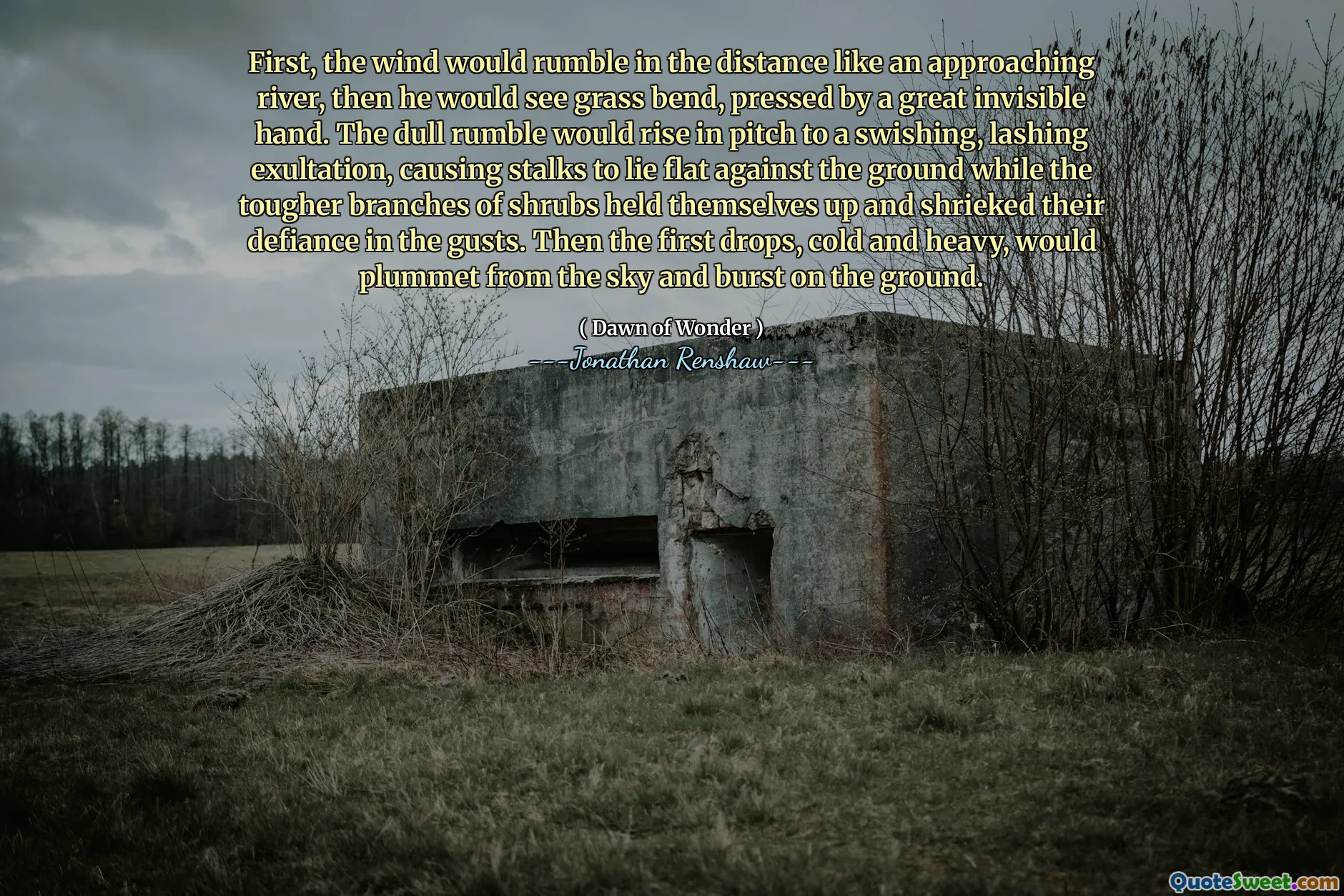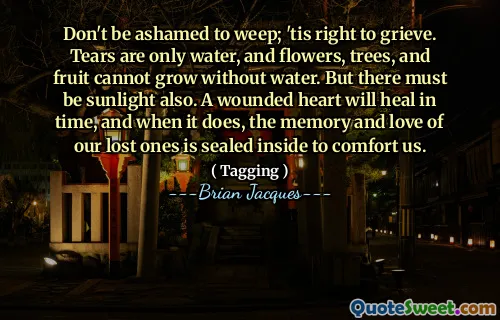
First, the wind would rumble in the distance like an approaching river, then he would see grass bend, pressed by a great invisible hand. The dull rumble would rise in pitch to a swishing, lashing exultation, causing stalks to lie flat against the ground while the tougher branches of shrubs held themselves up and shrieked their defiance in the gusts. Then the first drops, cold and heavy, would plummet from the sky and burst on the ground.
This vivid passage from 'Dawn of Wonder' by Jonathan Renshaw beautifully captures the raw and dynamic onset of a storm through poetic and sensory-rich imagery. The personification of nature—the wind as a lurking river and the grass pressing down as if by an invisible hand—imbues the scene with a sense of both power and inevitability. I am particularly struck by how the natural elements are portrayed almost as characters, with shrubs that “shriek their defiance” in the face of the storm, which illustrates an unyielding spirit amidst overwhelming forces. The progression in the description—from the distant rumble to the swelling gusts and the arrival of the heavy raindrops—mirrors the rising tension and release within the natural world. To me, this also reflects a broader metaphor for challenges in life: something that begins subtly, gradually intensifies, and forces us to confront it with resolve and adaptability. The storm's arrival encapsulates transformation and the beauty of nature’s cycles, reminding us of resilience and the interplay between vulnerability and strength. The use of auditory and tactile details makes the reader almost feel the approaching storm, evoking a profound connection to the environment and a sense of shared experience with the natural world. Overall, this passage inspires admiration for the way art can illuminate the rhythms of life and the emotional resonance carried by the forces of nature.

